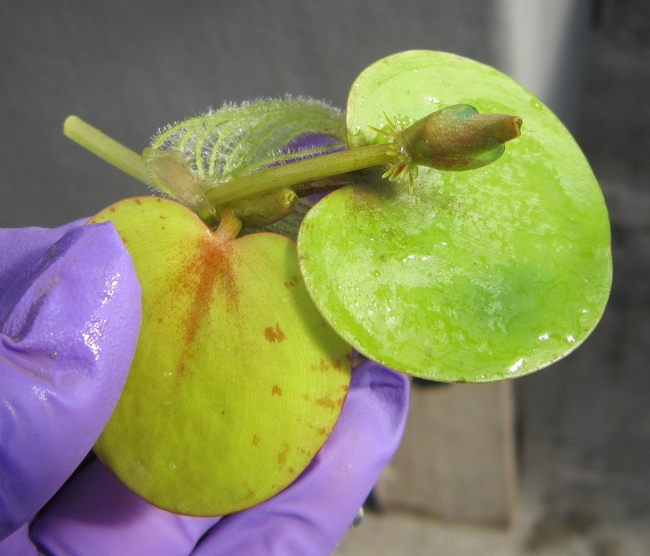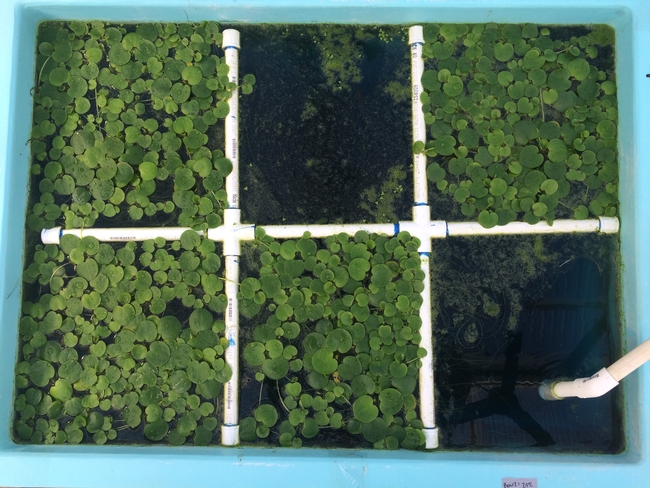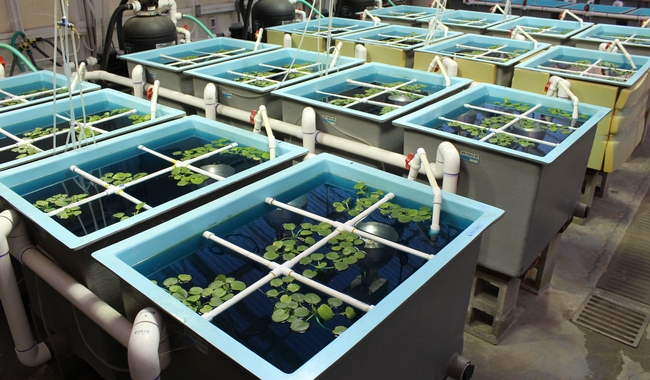
Between August 2017 and March 2018, two studies were completed to determine the growth potential of South American spongeplant at different temperatures. These studies were designed to investigate how changes in the Delta's water temperature may affect the species' ability to proliferate and spread.
Plants were collected from the Sacramento-San Joaquin Delta and cultured in a greenhouse. The studies were conducted in 16 aquatic tanks (four rows of four tanks) in a greenhouse setting. Each row of tanks was randomly assigned a water temperature of 15, 20, 25, or 30°C. Each tank was divided into six 0.1-meter-square sections using a floating PVC grid. The studies were initiated by adding 3 spongeplant rosettes of 5-8 leaves to each section. The plants were grown in deionized water with dye added to reduce algal growth. Fertilizer was applied as needed, and supplemental lighting was used to maintain a 14-hour day length.
Each week for six weeks, a different section of the grid was harvested. The number of harvested rosettes, defined as a root base with at least one fully expanded leaf, were quantified. Harvested plants were dried in an oven at 70°C for 48 hours. Dry sample masses were measured.

Study data has been compiled, and the results will be analyzed for future publication.
A tip for anyone interested in culturing this plant for research: we found spongeplant to be very sensitive to even mild insecticides needed for aphid control. We suggest using an insecticide with pyrethrin only or with pyrethrin and canola oil.

Christy Morgan is a Biological Science Lab Technician with the USDA-ANR Invasive Species and Pollinator Health unit at Davis. These studies were conducted in cooperation with the Delta Region Areawide Aquatic Weeds Project (DRAAWP).
